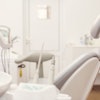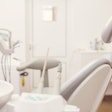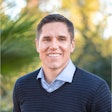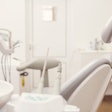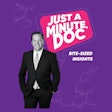
We all know that the COVID-19 crisis of 2020 has dramatically affected every facet of our great industry -- manufacturers, dealers, organizations, meetings/conferences, private practices, and dental service organizations (DSOs). Interestingly, when it comes to DSOs/groups, what we are seeing is some continuation of trends and behavior from 2019 and the first quarter of 2020, as well as some new trends that should now continue into 2021.
DSOs can be classified or categorized in several ways. A simple method is just to do this geographically (usually meant to translate into size as in number of practices). However, with more than 1,000 DSOs operating, for the purpose of studying and evaluating business activity and trends, I believe the best way to do so is the "four-level system" -- startup, emerging, midmarket, and elite. With approximately five to seven startups entering the market every month, and only a few dozen elites, the overwhelming majority of DSOs fall in to the middle two: emerging and midmarket.
As we enter the last quarter of 2020, here are six (not the only six, but, to me, the most interesting) dental trends as they relate to the activity/behavior of DSOs.
1. Strong multiples for practice acquisitions
As was the case over the past few years, so long as practices are able to show their collections to be back to where they were pre-COVID-19, purchase price multiples remain high (four to eight times more earnings before interest, taxes, depreciation, and amortization [EBITDA] for and often well beyond one-time annual collections for large, single-location practices). Terms may be a bit different than before, but that's for another article.
2. Startups and emerging groups are very active
As the larger DSOs had much to deal with in regard to human resources and regulatory issues with their current affiliates that needed priority attention, the smaller/early-growth DSOs have been out there busily acquiring new practices. As one large DSO executive told me back in May, "How can we explain or justify a $5 million acquisition when we don't have full teams in place in our current affiliates?"
3. Elite groups acquiring medical/wellness companies
The larger DSOs, many run by experienced businesspeople and/or those coming from the medical industry, recognize the synergistic potential of adding other healthcare (including cosmetic/spa) services and programs to integrate within their current affiliates or as a "side-by-side" sort of model. Expect to hear announcements around this concept from several of the largest DSOs in the next few months.
4. Midmarket DSOs becoming more flexible in their acquisition criteria
In the "old days," most DSOs targeted "$1 million-plus revenue, five-plus operatories, visible from the street in suburban or rural locations" practices. Now, and there are multiple reasons for it, we see many DSOs that have a number of affiliates within a state being OK with lowering that criteria for single location add-ons. However, at the same time, they are now looking at practices/small groups that are larger than before as platform acquisitions to expand into new states.
5. Increase in 'alternate' DSO models
This was pointed out last year by a number of industry DSO consultants, and we are now certainly seeing an increase in startups offering other options to dentists (again, for many reasons) who may not want (ever or at least initially) to completely sell and suffer the subsequent loss of control of their business. Some of these models are simple tweaks of the regular DSO concept such as a dental partnership organization (DPO), but we are now seeing dental franchise models on the rise, strategic affiliate models (keep control of everything, but outsource some/all of administration/business in exchange for a small percentage of collections), and what are called loosely affiliated dental organizations (LADOs). These allow individually owned practices to come together to leverage themselves and receive some of the benefits that DSOs offer.
6. Dentists becoming more knowledgeable and tolerant of DSOs
After many years of our surveys showing that the majority of dentists have negative opinions of DSOs, we are now experiencing a significant increase toward neutral -- certainly not yet positive, but an obvious shift is occurring. Dentists are also taking the time to learn more about what makes DSOs different from one another, recognizing there are all shapes and sizes and models, rather than lumping them all together.
There are three main reasons for this. First, they are growing tired, especially in the post-COVID-19 environment, of running their businesses and realize they just want to do dentistry and make a good living. Second, many now know colleagues who have sold to DSOs and have received positive feedback about the experience. Third, many recognize that, with more than 1,000 DSOs, there are choices and models for them to learn about.
What will 2021 bring? More of the above plus the development of some new trends. It should be quite a ride!
Dr. Anthony Stefanou is a dentist of 32 years (nonpracticing) and a certified business intermediary (CBI). He is the managing partner and founder of Connect the Dents, a dental mergers and acquisitions and business development advisory company working with manufacturers, dealers, DSOs/practices, and the Dental Sales Academy. He can be reached at [email protected].
The comments and observations expressed herein do not necessarily reflect the opinions of DrBicuspid.com, nor should they be construed as an endorsement or admonishment of any particular idea, vendor, or organization.


